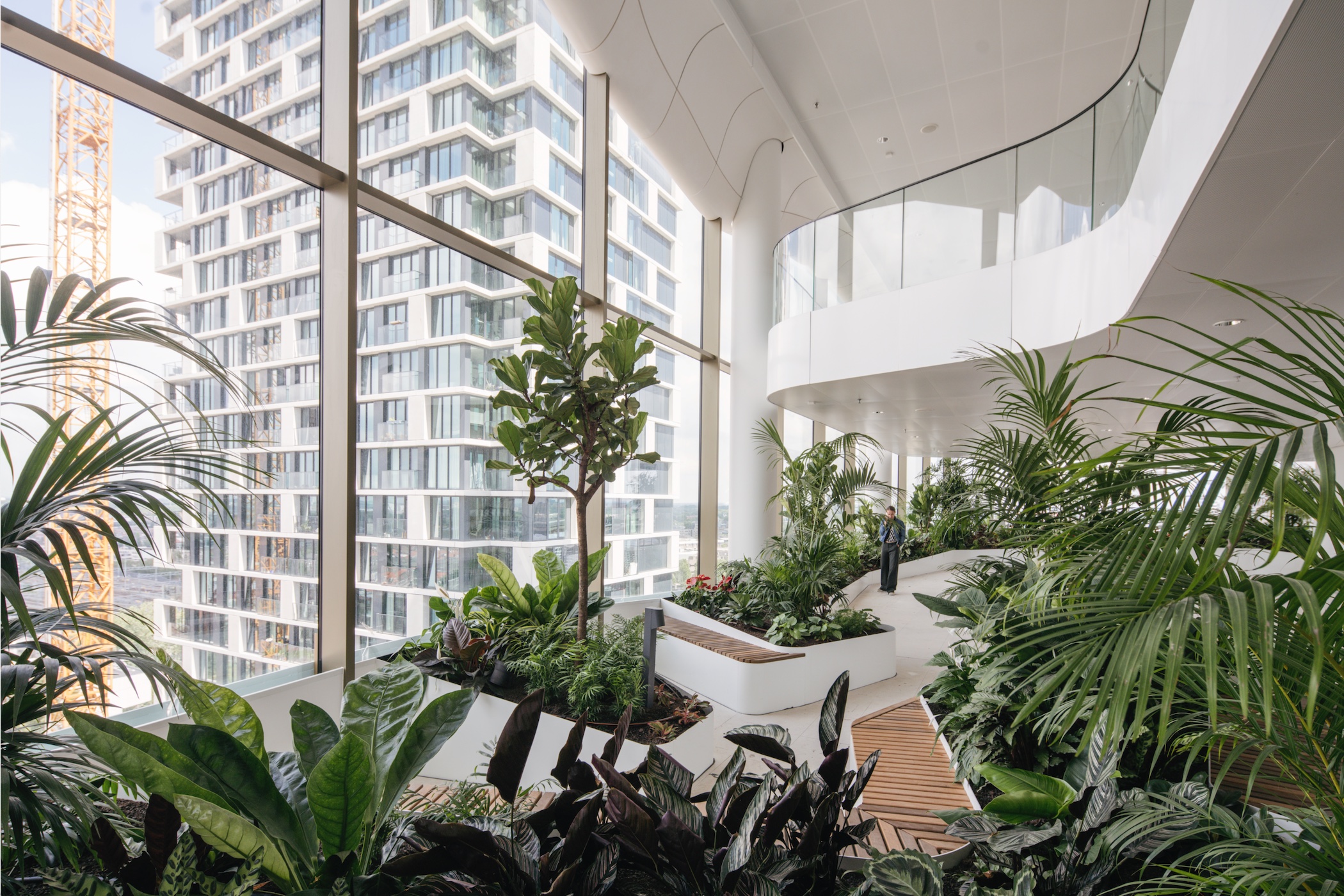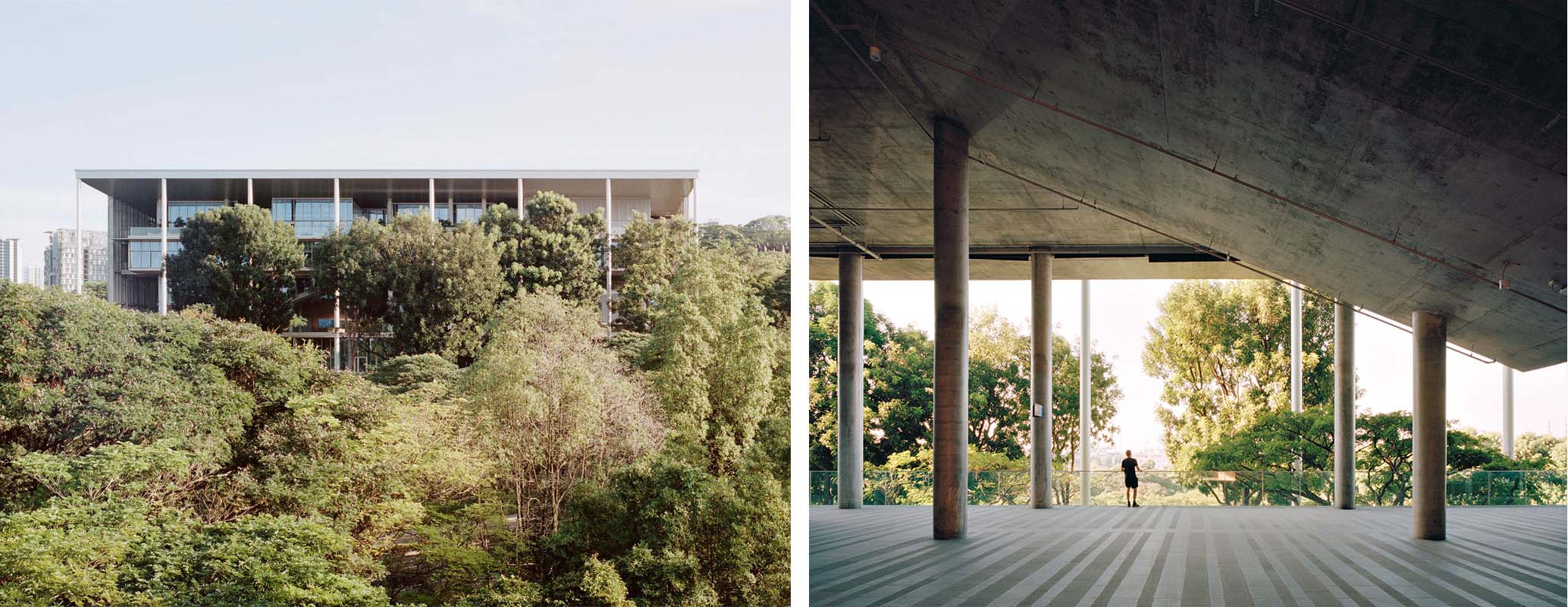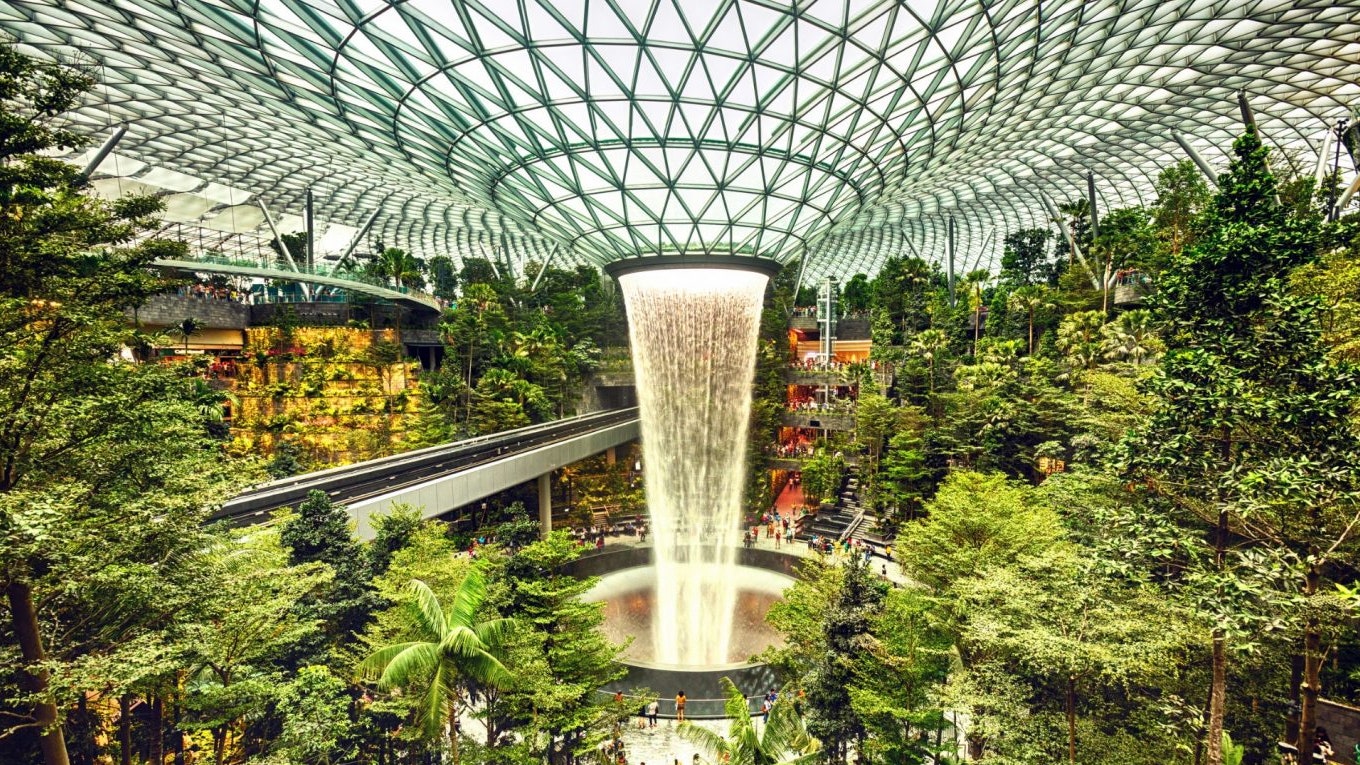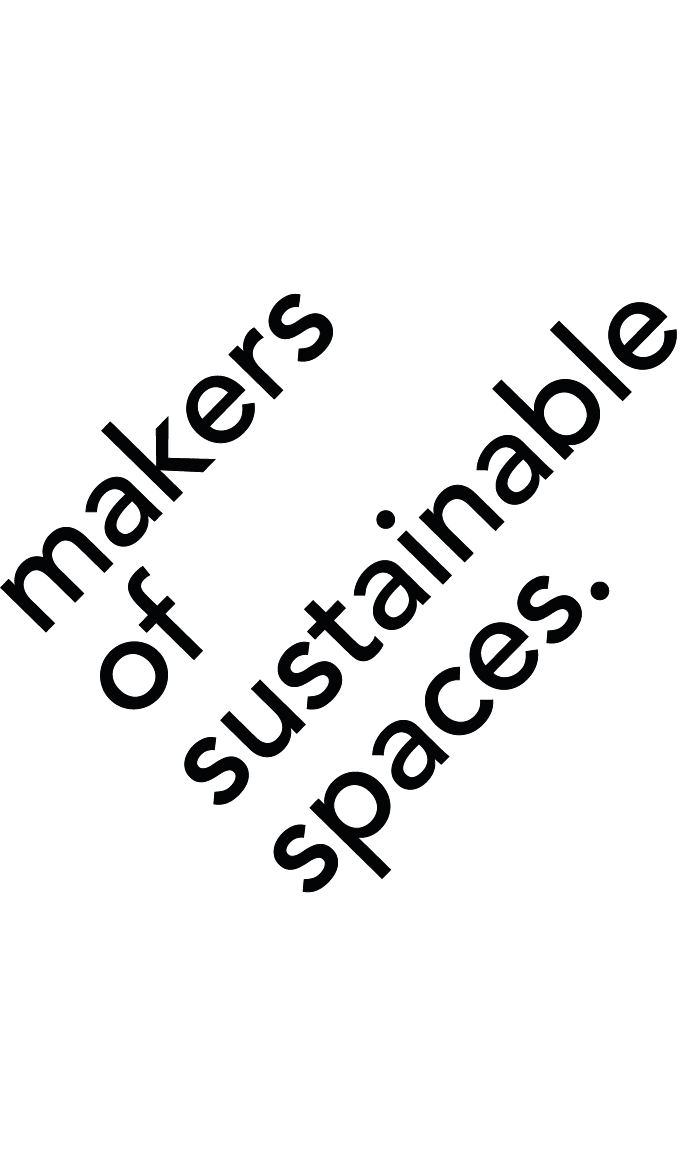

30 Aug Healthy Buildings: The WELL Building Standard
by Kelai Diebel
Health and wellness is a growing phenomenon that appeals to everyone. All around the globe, developers, changemakers, investors, architects, and designers are promoting environments that support healthy lifestyles. Since most of us spend 90% of our lives indoors (1) leveraging the built environment with healthier spaces is how we can substantiate wellness.
Go ahead and do the math: Take your age and multiple it by 0.9. That is your indoor age!
With such a great portion of our lives taking place inside, the spaces we inhabit have a monumental impact on our livelihood.
Sick Building Syndrome is a health condition that is caused by various indoor environmental dynamics. Even before the pandemic struck, there were plenty of reasons to be worried about ‘sick’ buildings. After all, healthier indoor environments don’t just keep us from getting sick, they can enhance our cognitive function, too.
There is solid evidence that spending time around plants and nature in well-lit and well-ventilated spaces improves our mood and reduces stress. Findings on heart rate, blood pressure, and stress levels, indicate that natural settings have a positive effect on our well-being. Some chronic conditions can even be prevented with health-promoting design.
Imagine if spending time indoors didn’t mean spending time apart from nature. MOSS has just created an indoor oasis in Utrecht, called Central Park, as an affirmation of the future of healthy buildings. Read more about the project and collaboration here.


HOW I BECAME AN AMBASSADOR OF HEALTH IN BUILDINGS
As the first wave of COVID-19 hit, I scrutinized my role as a designer of the built environment. Thinking about how we spend 90% of our lives indoors, and even more so during the lockdown, I contemplated how our bodies react to space. I turned lockdown boredom into busyness as I dove into the world’s first building standard focused exclusively on human health and scanned over the 236-page WELL Building Standard V1.
I familiarized myself with the latest wellness research, documentation, and requirements. Many of the metrics I was bound to learn shocked me (phthalates.. photocatalytic oxidation… equivalent melanopic lux calculations to name a few…) but I was up for the challenge.
I registered to take the exam and gave myself 6 months to pour over flashcards, mnemonics, online seminars, and tens of practice exams. The hard work paid off when I passed my first attempt with a score of 91/100 in August 2020, and became a WELL Accredited Professional (WELL AP™).
Achieving this accreditation was a big step for me in becoming an ambassador of health in buildings and an even greater advocator of spaces that empower people. Now I’m more aware of how building design impacts my levels of energy and alertness, and I more clearly understand the relationship between the built environment and human health.
With the frameworks of WELL as my foundation, I’m soundly committed to solutions that protect occupant health, promote occupant wellness, and prevent environmental harm.
THE WELL BUILDING STANDARD
The WELL Building Standard was launched in 2014 by the International WELL Building Institute (IWBI). It is a performance-based system for measuring, certifying, and monitoring features of the built environment that affect human health and well-being.
In the last six years, more than 5,000 projects have achieved the WELL Building Standard equating to more than a half-billion square feet (50 million square meters) of projects.
Scientists, health care practitioners, public health experts, and building professionals worked together to develop the standard’s 10 concepts of building performance. All in all, the concepts support and advance human health with the themes of air, water, nourishment, light, movement, thermal comfort, sound, materials, mind, and community.
The first version of WELL, WELL v1 classifies 100 performance features into seven categories called “Concepts”. Biophilic design is incorporated throughout the v1 Mind Concept in two features:
- 88: Biophilia I – Qualitative
This feature intends to nurture the human-nature connection through a biophilia plan that details how nature is incorporated through the project either through environmental elements, lighting, or biomimetic patterns.
- 100: Biophilia II – Quantitative
For this feature, WELL project design teams must develop a biophilia plan that supports:
-
- Outdoor Biophilia where at least 25% of the project site must feature landscaped grounds or rooftop gardens.
- Indoor Biophilia where at least 1% of the floor area must be covered by plants, plus one living wall should be included per floor.
- Water Feature where at least one water feature should be included for every 10,000 m2.


The most recent version, WELL v2, has doubled the importance of biophilic design, now with nature taking part in four features of the v2 Mind Concept:
- M02.1 Provide Access to Nature
Projects integrate and encourage occupant access to nature within the project boundary through the following:
-
- Indirect connection to nature through the use of natural materials, patterns, colors, or images.
- Space layout addressing the placement of natural elements along with common circulation routes, shared seating areas, and rooms to enhance occupant exposure.
- Direct connection to nature through at least two of the below:
-
- Plants
- Water
- Light
- Nature views


- M07.1 Provide Restorative Indoor Spaces
This feature gives credit to projects with indoor spaces designated for complementation, relaxation, and restoration. The restorative space must be 7m2 minimum per occupant, and up to 74m2 is required. Nature incorporation is one of the design criteria along with sound masking, calming textures, and visible privacy, to name a few.
- M07.2 Provide Restorative Outdoor Spaces
This feature gives credit to projects with outdoor spaces designated for complementation, relaxation, and restoration. The restorative space must be 7m2 minimum per occupant, and up to 74m2 is required. Nature incorporation is one of the design criteria along with sound masking, calming textures, and visible privacy, to name a few.
- M09.1 Enhanced Access to Nature
This feature gives credit to projects which complete at least two of the following:
-
- Outdoor nature access with at least 25% of the exterior building site area consisting of accessible landscaped grounds, or rooftop gardens.
- Indoor nature access with any combination of indoor plants or water features that are within a direct line of sight of at least 75% of all workstations and seating.
- Views of outdoor landscapes within a direct line of sight for at least 75% of all workstations and seating.
- Nearby nature access with at least one green or blue space of a minimum of 0.5 hectares within 300 m walking distance from the project.
HOW DOES HEALTH, SUSTAINABILITY, AND BIOPHILIA LOOK IN A BUILDING?
“We envisioned a transparent volume where the outside and inside spaces are ambiguous; where nature and landscape play an important role as the backdrop to the building.”
– Christopher Lee, principal, Serie Architects


The National University of Singapore (NUS) School of Design and Environment (SDE) became the first building to achieve the WELL™ Health-Safety Rating in Singapore (10). SDE4 is a six-level property designed by Serie Architects and Multiply Architects. Since SDE4 opened its doors in 2019, not a day goes by where occupants aren’t invited to connect to nature and breathe in the fresh air.
The architectural concept of SDE4 was to use open facades to allow the building to interact closely with its surroundings, tapping to breezes, biophilia and the tropical environment. The gardens are integral to the experience and function of the building. 50% of the plants are native species from the southern tropics and the landscape is designed as a natural purification system that clears runoff through vegetative layers.


Singapore has been leading the way for years, actually, green building has been mandatory since 2008. Singapore also scores best on the Green View Index developed by MIT which measures the number of trees in different cities.
In the early years of independence around 1965, Singapore’s founding prime minister, Lee Kuan Yew made a clean and green Singapore the cornerstone of his government policies. Buildings in Singapore are required to make up for the nature lost through development, now resulting in Singapore being home to some of the world’s most creative solutions in vertical gardens and sky gardens.


Lee Kuan Yew’s successor, Goh Chok Tong, once remarked that Singapore was the only country whose administration spent time reading gardening reports (11). Just think… if the leaders of your nation, the developers of your buildings, or the decision-makers at your workplace were reading gardening reports, too… might the spaces you inhabit make you feel better?
PAVING THE WAY FOR HEALTHY BUILDING POLICY
In the last decades we have seen energy security, conservation of natural resources and climate change drive the development of sustainable building standards like LEED and BREEAM. Today these standards are the benchmarks for green buildings and have been woven into building codes throughout the world. The green building market is anticipated to be among the fastest-growing industries worldwide and today there are more than 600,000 BREEAM (12) and 100,000 LEED projects worldwide (13). Check out all of the green projects we have realized at MOSS here.
Now more than ever, human health indoors deserves the scrutiny, concern, and action of change-makers. While a number of health issues are tackled through building codes, there is a lack of focus on access to nature, so as healthy buildings move from “innovative best practice” to standard practice, ensuring healthy cities requires the support of public health activists, urban planners, environmental activists, and policymakers.
WHERE DO WE GO FROM HERE?
While health and wellness initiatives gain momentum across the built environment landscape, our vision is stronger than ever for all people to live and work in healthy and sustainable spaces. We understand the impetus for pro-health buildings and we see them as something everyone deserves.
Are you interested in getting to know more about the power plants have on well-being or do you want to know the impact of WELL on your building? Reach out to our team at info@moss.amsterdam to take the next step.
SOURCES
- Allen, Joseph G., and John Macomber. Healthy Buildings How Indoor Spaces Drive Performance and Productivity. Harvard University Press, 2020.
- McCormick, Kathleen. The Business Case for Healthy Buildings, The Urban Land Institute, 2018, globalwellnessinstitute.org/wp-content/uploads/2018/12/Business-Case-for-Healthy-Buildings-FINAL.pdf.
- Nieuwenhuis, M., Knight, C., Postmes, T., & Haslam, S. A. (2014, July 28). The Relative Benefits of Green Versus Lean Office Space: Three Field Experiments. Journal of Experimental Psychology: Applied. Advance online publication. http://dx.doi.org/10.1037/xap0000024
- (Appleton, 1975; Balling & Falk, 1982; Kaplan, Kaplan, & Brown,1989; Orians, 1980; Orians & Heerwagen, 1992; Ulrich, 1983, 1986).
- Khan, A. R., Younis, A., Riaz, A., & Abbas, M. M. (2005). Effect of interior plantscaping on indoor academic environment. Journal of Agriculture Research, 43, 235–242.
- Vischer, J. C. (2005). Space meets status. Abingdon, UK: Routledge.
- Dravigne, A., Waliczek, T. M., Lineberger, R. D., & Zajicek, J. M. (2008). The effects of live plants and window views of green spaces on employee perceptions of job satisfaction. HortScience, 43, 183–187.
- “A Surprising Way to Cut Real Estate Costs.” Commercial Real Estate, 25 Sept. 2016, www.us.jll.com/en/trends-and-insights/workplace/a-surprising-way-to-cut-real-estate-costs.
- World Green Building Council. Health, Wellbeing & Productivity in Offices, 2014, www.worldgbc.org/sites/default/files/compressed_WorldGBC_Health_Wellbeing__Productivity_Full_Report_Dbl_Med_Res_Feb_2015.pdf.
- Alyn Griffiths | 1 March 2019 Leave a comment. “University of Singapore’s Sde4 Building Is a ‘Prototype of Sustainable Design.’” Dezeen, 5 June 2019, www.dezeen.com/2019/03/01/university-of-singapore-sde4-building-serie-architects-multiply-architects/.
- Cheam, Jessica. “Leadership in Sustainability: Where Does SINGAPORE STAND?” Eco-Business, 2 July 2020, www.eco-business.com/opinion/leadership-in-sustainability-where-does-singapore-stand/.
- https://www.breeam.nl/english-9#:~:text=With%20this%20method%2C%20projects%20can,already%20have%20a%20BREEAM%20certificate.
- Cheam, Jessica. “Leadership in Sustainability: Where Does SINGAPORE STAND?” Eco-Business, 2 July 2020, www.eco-business.com/opinion/leadership-in-sustainability-where-does-singapore-stand/.


